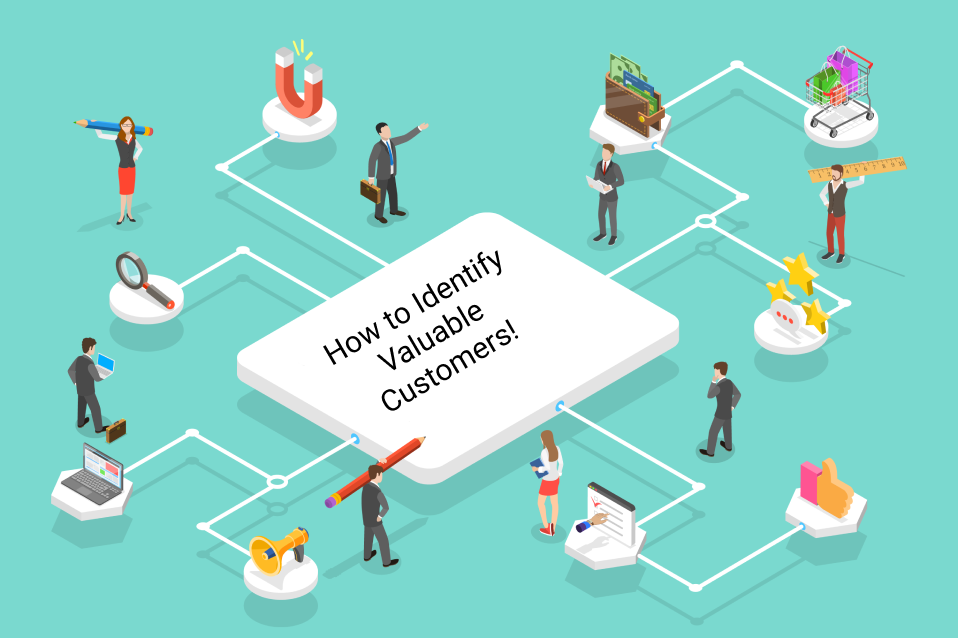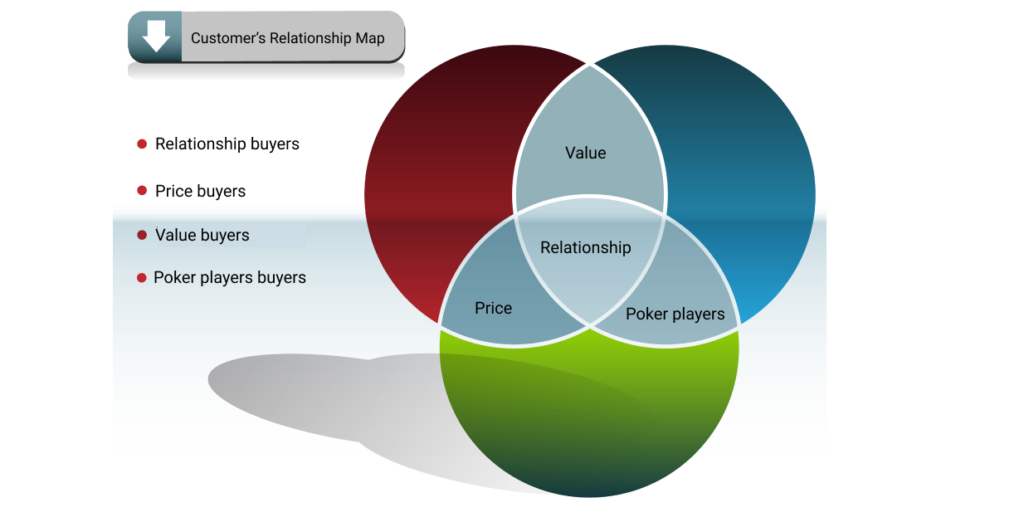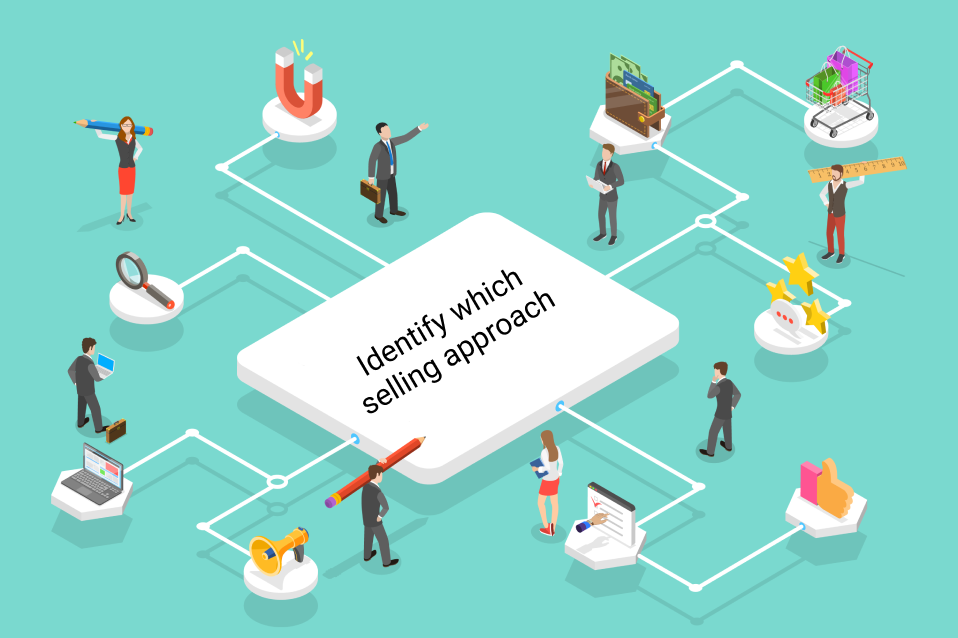High-ROI customer acquisition strategies (2024)
Get high returns on customer acquisition costs, with a customer acquisition strategy that lets you acquire customers with higher value.

Every business that’s investing in customer acquisition is doing it to get more customers – that’s obvious. But most businesses doing user acquisition marketing are completely oblivious to what really makes user acquisition worth your time and the acquisition cost.
There are little known and little used customer acquisition strategies that turn an OK customer acquisition process into a Goose laying golden eggs. I’m not gonna lie, these strategies require hard thought and preparation but they will transform your business.
At the heart of the user acquisition strategies I’m about to teach you lays the difference between low-value customers and high-value customers (HVC). The difference in contribution to revenue can be 10 fold for those high-value customers as opposed to regular ones. And these super spenders also tend to be your advocates wherever they go, which brings you more loyal and enthusiastic customers.
Your most valuable and fiercely-loyal customers have the ability to skyrocket your revenues over the long term. Higher-value customers are essential for the financial stability of any SMB that seeks growth.
However, acquiring those high-value customers could be very challenging for many SMBs.
High value customer acquisition and churn reduction – your holy grail
The issue of customer churn is a painful one for most businesses since a new customer costs five times more to obtain than to retain an existing one. In other words, the acquisition cost is 5 times higher than the remaining cost.
Because HVCs will be responsible for the majority of your company’s revenue, each dollar spent on acquiring these darlings is a dollar well spent, with higher returns on your acquisition cost. So, be sure you attract them and keep them! If you do, your business is sure to thrive for a long time to come.
But, to keep delivering according to what your customer’s expectations are, you are going to need to understand how they interact with your business and where they are coming from.
Thankfully, you have some helpful tools, tactics, and strategies available to you, which we will get into in a little bit. If you want to know how to find new customers and increase sales, then you’re in luck because we’ve got you covered.

Low Value Customers vs. High Value Customers
Before we get too far into this guide regarding how to find new customers and increase sales, it’s important to understand what is the difference between low-value customers and high-value customers. Here is how these two major types of customers differ:
| Low-Value Customers: | A customer who can be responsible for providing a significant portion of your business. Also, they increase the growth of your business by telling others about what you offer |
| High-Value Customers: | A customer who does not provide that much business and who may not return after one transaction is completed. |
As you can see, you will certainly want to entice high-value customers over low-value ones. Although low-value customers have their place, you will definitely want to focus your efforts on attracting higher-value customers.
There are some creative ways that you can entice HVCs to become consistent customers who keep returning to you, and even bring more business from the outside.
1. How to Identify Valuable Customers
If you want to know how to identify valuable customers, then don’t worry. We have a condensed list of five of the most creative ways to can acquire higher-value customers and grow your business.
When you follow these steps, you will land those dream clients who keep giving back to you and helping you flourish. Ideally, we recommend applying each and every one of these, for that extraordinary success you are hoping to unlock by acquiring HVCs.

2. Build and Understand Your Customer’s Relationship Map
Do you remember when you were in geometry class back in middle school or high school? You probably at some point drew three interlocking circles with a protractor. Well, you can use that same visual aid to develop the basis for a relationship map.
There are 4 different types of customers: Identity them below
1. price buyers: These consumers are most likely going to purchase products or services at the lowest price. They don’t take into account value.
2. Relationship buyers: The type of customers who you want to focus on, they rely on the relationship between their supplier, build trust, and expect good treatment.
3. Value buyers: Types of customers who strongly rely on value, they want to get the best value for their money’s worth.
4. Poker players buyers: These are customers who pretend to be price buyers to get high-value services and products for low prices.
In each one of those circles, categorize your top customers and place them accordingly. That way, you can then think about what they all have in common. What is it about your products or services that beings them together? Once you have collected your data, it’s onto the next tactic to land those HVCs.

3. Narrow Down Your Targeting to Help Potential Customers Self-Select
After analyzing the type of customers you have by following the steps above, it’s now time to prioritize which consumers you need to focus on.
To focus on acquiring higher-value customers, you need to know how to identify valuable customers and help them self-select. The hope is for customers to do most of the work for you so that you can spend more time running your business.
If you get involved in customer segmentation, you will have an easier time getting your products or services in front of potential customers who will be able to benefit the most from them.
To employ customer segmentation, you can do a few things. First, you can identify who your HVCs are. Do you see any clear connections between what you sell and who is interested in what you sell?
You can take advantage of data collected by a third party, or even an industry report. Also, you can look for similarities.
When your product or service is clearly marketed as fulfilling a particular kind of need, you won’t leave room for any ambiguity, which will help condense your target audience to be of the high-conversion and high-retention kind. Finally, you can create a customer persona that describes the segments you have identified.
4. Identify which selling approach to use for different customers
Each consumer requires a different selling approach according to their category.
1. Price buyers: consumers who don’t commit to anything are always changing suppliers. Their purchase decision is based on the lowest price they can receive.
How to negotiate with price buyers:
- Provide them with a full analysis of the cost of service or product that includes everything before giving your price.
- Don’t mention valued oriented features, this won’t make them budge.
- Establish a baseline price that you are not willing to agree with.
2. Relationship buyers: These consumers have a high level of trust and loyalty. They expect their suppliers to be professional and know everything about the service/ product they offer.
How to Negotiate with relationship buyers
- Provide them with a deep knowledge base, focus on specific problems, and provide value-oriented solutions.
- show them that your recommendations and forwardness is solely based on their best interest.
- Be persistent with examining areas of frustration how it impacts their daily life.
3. Value buyers: customers who want suppliers that offer added value to their daily operations for best price possible.
How to Negotiate with value buyers
- Don’t focus on pricing during meetings.
- Show them how you can add double value by providing what other competitors have to offer, in terms of value.
4. Poker players: consumers who value relationships buyers but behave like price buyers. Their intention is to get the best price and high value. So, they pretend to be price buyers which benefits them at the cost of the seller,
they often ask for more.
How to Negotiate with poker plays
- provide them with the value they will get a head of time.
- In order to beat them, you have to think like them. prepare your offer according to what they may ask.
- Own your value, stand your ground, this will make them respect you! Don’t start giving discounts this will and trust me they will purchase from you.

4. Provide Loyalty Programs to Reward Long-Term Customers
A solid loyalty program is a classic strategy to receive and retain long-term customers. If you already have a loyalty program, check up on it and make sure that it is up-to-date and appealing.
HVCs love a good loyalty program. Statistics have found that your repeat buyers will spend a third more than new ones, while an overwhelming majority of SMBs say that their most loyal customers are the primary reason for their growth. If your business can provide a great customer experience that helps achieve customer success, then they are much more likely to stay long-term customers.
A well-designed loyalty program will help you attract the kind of high-value customers you are hoping to get while increasing your overall sales. You will want to look into the best type of loyalty program for your type of business so that they appeal to your target customer. New technologies have made loyalty programs much more dynamic than they used to be. Shop around and take a look at what’s out there.
5. Offer Free Trials to New Customers Who Potentially Fit the HVC Category
Free trials are designed to give just a taste of the full experience of whatever the product or service is that you are selling.
Offering free trials to customers who are likely to fall into the HVC category of customers can benefit you big-time if you do them right.
You will want the bite they take to be appealing enough, but not give away the farm. That’s why successful trials fine-tune them to be something that is either time-limited, feature-limited, or capacity-limited.
The taste they get has to be irresistible to them. They have to feel like there is so much value to be had from your product or service that they would gladly pay to use the full-fledged version of it.
You want them to want to come back for more. If your desire is to boost higher-value customer acquisition and retention, then throwing in free trials is a surefire way to do it.

6. Referral Schemes to existing customers
Finally, you can set up something like a referral program. Something that is commonly done is to provide customers 10% off of a product or service if they refer someone else. This works extraordinarily well with high-value HVCs since the odds are high that their circle of friends also has high value.
Referral programs require you do to almost nothing or make any investment. You may even go as basic as asking your HVCs whether they could tell others in their network about your business and what you offer.
You’ll get some great leads as a result of this low-effort method of acquiring higher-value customers. Whatever you decide your referral program to be, make sure that it is appealing enough for HVCs to want to join.
As one final note, if you are just starting your new business, you can build authority by having a working referral program. By providing your service or product for free in exchange for a case study or in-depth testimonial, you can generate high opinions of your business.
When those referrals come from HVCs, the returns are going to add up to way more than you would have received if a customer simply made one transaction and never came back
Final thoughts
A majority of companies go after growth opportunities without even properly defining who their ideal high-value customer is. Given this lack of clarity, they won’t achieve the sort of profitable growth they could have if they clearly understood who their higher-value customers were. Defining and picking the right customers is vital, especially if your business doesn’t have much in the way of resources or is not that well-known.
Now that you know how to find new customers and increase sales in a few creative ways, you can get laser-focused on acquiring high-value customers. At WiseStamp, we aren’t just in the business of creative and dynamic email signatures, although that is a big part of what we do.
We also want to help entrepreneurs, SMBs, and people looking to improve their businesses and what they offer. One of the keys to doing that is to acquire and retain higher-value customers and clients. Once you have a solid core group of HVCs, your business is basically set.
They will be your repeat customers who also bring in more customers for you from out of their inner circle. When you know how to identify valuable customers, you significantly boost the potential for your sales to skyrocket.


